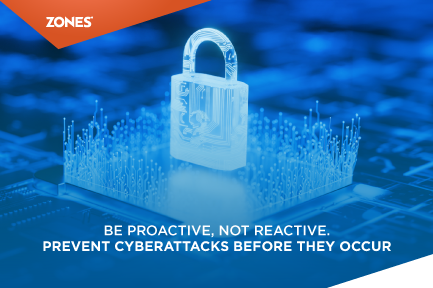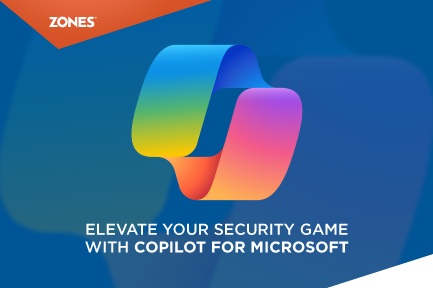5 Ways Microsoft Copilot for Security Will Change Your Business Security
Security breaches remain a persistent issue for both small and large corporations in today's digital age. The cost of a security incident, whether a...

With cyber threats being increasingly pervasive and sophisticated, security readiness is no longer a luxury—it's a necessity. Organizations must be vigilant in fortifying their defenses to protect sensitive data, maintain operational continuity, and safeguard their reputation. Security readiness involves a proactive approach to identifying, managing, and mitigating risks before they can cause significant harm. This blog post explores the critical components of security readiness—bolstered by insights from the latest cybersecurity reports—and outlines how organizations can effectively prepare for the challenges ahead.
The cybersecurity landscape has become much more unpredictable than before. A recent cybersecurity readiness survey* shows that 85% of the organizations encountered one or multiple cyberattacks over the past twelve months. Such alarming statistics prove that cyber threats are almost everywhere and show the urgency of why organizations have to strengthen their security posture. Furthermore, the survey* revealed that more than half the respondents are not fully confident in the security systems implemented in organizations today, revealing a large gap in their security readiness.
As threats in cyberspace continue to evolve both in complexity and scale, organizations have no option but to embrace a holistic security approach. This also involves using the latest technology, promoting security consciousness among the users, and having well-defined security measures.
One of the most important components of security readiness is the identification of threats in real time. Studies* showed that an estimated 27% of organizations are fully confident about their capability to handle advanced persistent threats (APTs)—the most potent form of cyber threats. To close this preparedness gap, organizations need to invest in state-of-the-art security tools that may identify malicious activities as they occur and trigger an immediate response.
Extended Detection and Response (XDR) solutions provide a broad approach that gathers data from various sources in an organization and provides a common platform for analysis of the threats. This helps security teams to quickly respond and contain the threats before they can escalate.
A well-functioning SOC is necessary for constant monitoring of corporate networks. According to a recent report, organizations that have implemented advanced SOCs are more than twice as likely to mitigate cyber threats than those that have not. However, this is not always possible since not every organization can invest in developing and running a SOC from scratch.
SOCaaS offers organizations continuous monitoring, state-of-the-art analysis, and professional response to each threat detected. Outsourcing SOC operations to will help reduce the time spent on managing security operations while keeping the organization safe from cyber threats.
Preventing breaches requires proactive vulnerability identification and remediation. According to recent research*, 43% of companies do not yet have a comprehensive vulnerability management program implemented in its entirety, which leaves them open to possible assaults. An effective vulnerability management program includes regular scanning, patch management, and risk assessment.
Customized vulnerability management services are designed to help organizations identify, prioritize, and remediate vulnerabilities before they can be exploited. Through consistent evaluation and enhancement of their security posture, organizations can considerably lower the risk of a successful cyber attack.
Endpoints are often the first line of defense against cyber threats, making endpoint security a critical component of overall readiness. A recent report* found that organizations with robust endpoint security measures are 50% less likely to experience data breaches. To enhance endpoint security, organizations should deploy Endpoint Detection and Response (EDR) solutions that provide real-time monitoring and protection.
Network security is equally important because it safeguards an organization’s infrastructure against external and internal threats. Firewalls, intrusion detection systems (IDS), and intrusion prevention systems (IPS) are among the elementary security devices that protect network boundaries. Network security solutions are designed to protect organizations from a wide range of cyber threats, ensuring their network infrastructure remains secure and resilient.
Data breaches can have devastating consequences, including financial loss, reputational damage, and regulatory penalties. In 2023*, 62% of organizations experienced a data breach, highlighting the importance of robust data protection measures. Encryption is one of the most effective ways to protect sensitive information, ensuring that data remains secure even if it falls into the wrong hands.
Comprehensive data protection solutions include encryption, access controls, and data loss prevention. By implementing these measures, organizations can safeguard their most valuable assets and ensure compliance with data protection regulations.
One of the significant factors contributing to security problems is human error, which is why it is essential to organize the training of employees and raise awareness of security issues. According to a recent report*, 58% of organizations have implemented regular security awareness training programs, but there's still room for improvement. Educating employees about the latest threats, phishing scams, and best practices for data handling can significantly reduce the risk of security breaches.
Offering tailored security awareness training programs equips employees with the knowledge and skills they need to recognize and respond to potential threats. By fostering a culture of security awareness, organizations can empower their workforce to act as the first line of defense against cyber attacks.
Security readiness requires a comprehensive and proactive approach, and Zones is committed to helping organizations achieve this goal. Through a combination of advanced technologies, expert services, and tailored solutions, Zones provides the tools and resources organizations need to stay ahead of the cyber threat landscape.
Every organization is unique, and so are its security needs. Zones works closely with each client to develop customized security solutions that address their specific challenges and objectives. Whether it's enhancing threat detection capabilities, improving endpoint security, or implementing advanced data protection measures, Zones delivers solutions that align with the organization's goals.
Zones security services provide organizations with around-the-clock monitoring and rapid incident response. By leveraging the latest technologies and industry best practices, it is ensured that threats are detected and mitigated before they can cause significant damage. This continuous vigilance is essential for maintaining a strong security posture in today's dynamic threat environment.
Zones integrates its security services with leading technologies, including MXDR, SIEM, and EDR solutions. This integration enables organizations to benefit from the most advanced tools available, ensuring comprehensive protection against a wide range of cyber threats. By staying at the forefront of technology, organizations maintain a competitive edge in cybersecurity.
Risk management is a critical aspect of security readiness, and Zones offers a range of services designed to help organizations identify, assess, and mitigate risks. From vulnerability assessments to compliance audits, Zones provides the expertise and resources needed to manage risk effectively and maintain a strong security posture.
As cyber threats continue to evolve, organizations must prioritize security readiness to protect their assets and ensure long-term success. By partnering with Zones, organizations can benefit from a comprehensive suite of cybersecurity services that address their unique needs and challenges. Zones' commitment to excellence in cybersecurity enables organizations to build a secure and resilient future, safeguarding their operations, data, and reputation in an increasingly complex digital world.

Security breaches remain a persistent issue for both small and large corporations in today's digital age. The cost of a security incident, whether a...
.png)
Defend your business against today’s most advanced cyber threats with Cisco Breach Protection XDR. As cybercriminals evolve, your security needs to...

Organizations rely immensely on their IT infrastructure to deliver high-quality services and products. Networks are the lifelines of businesses, and...